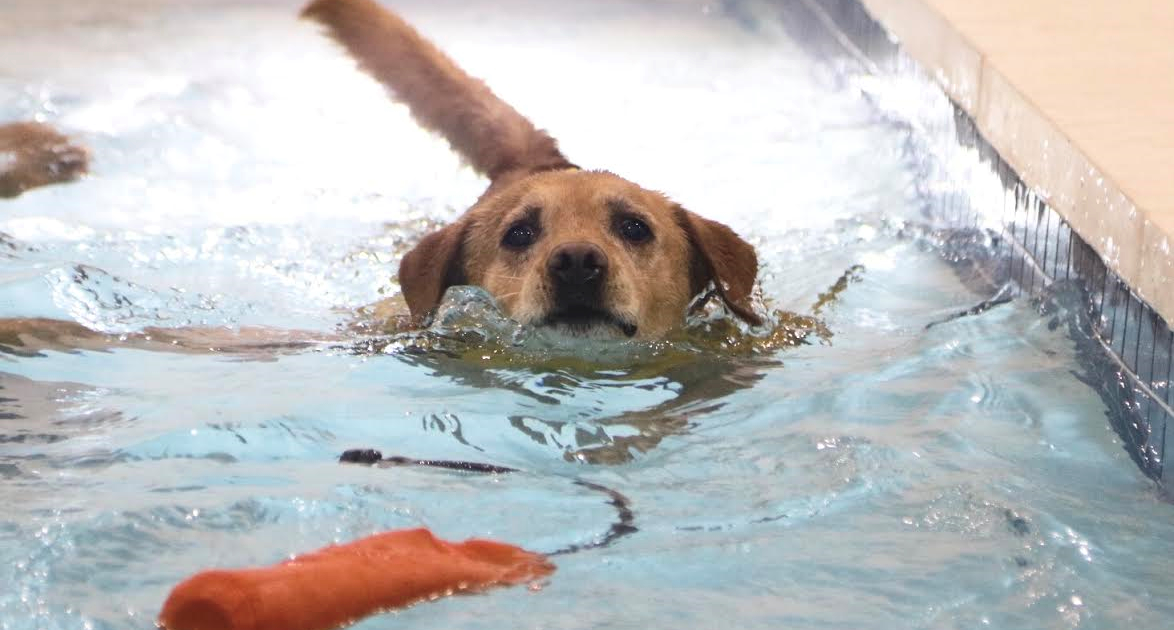The Benefits of Swimming for Dogs
Besides being fun for your dog, swimming will also do great things for him or her. The resistance of water makes your dog work harder to swim than he has to work on land to walk or run. He will show improved muscular strength and tone, while working the cardio-vascular and respiratory systems, without the impact of concussive exercise on land and the associated damage that it may cause.
It may surprise you to know that for a dog, 1 minute’s swimming is equivalent to about 4 minutes of running, according to Dr. Arleigh Reynolds, a Veterinary Surgeon and Canine Physiologist.
- Faster recovery from surgery, sprain or strain.
- Reduced pain
- Release of stress
- Age related limitations: decreased mobility, arthritis, stiffness.
- Weight reduction & management.
- Improved body condition & physical performance.
- Cardiovascular fitness.
Stronger, toned muscles help to protect dogs against injuries sustained during normal exercise, such as running or chasing a ball, or during more demanding exercise such as agility.
In healthy dogs, swimming should be used in conjunction with other exercise on land to ensure the dogs’ bones are kept strong by sustaining good bone density.
As with any fitness program, you should expect to start gently and increase the exercise over time. Don’t be surprised if your dog only swims for a few minutes or has a few short bursts to begin with. Gradually, as their fitness improves, they will be able to swim longer with fewer rests.
With our 85 degrees heated pools, dogs’ muscles won’t take long to “warm up” which helps relaxation and assists blood flow. It also helps to reduce muscle spasm and improve the dogs’ range of movement. Not to mention, if your dog is not that fond of swimming, the water temperature will make them more comfortable thereby making swimming much more enjoyable. The more they enjoy it, the harder they tend to work, and the more benefit they get from it.
For working dogs, such as rescue, police, drug enforcement, and seeing-eye dogs, swimming helps them improve their spirits and mental well-being.
For dogs with medical conditions that restrict or prohibit concussive exercise, swimming is very important to the dogs overall health and recovery. For example, in the case of any orthopedic surgery, it’s important to build up the supporting muscle prior to the operation. However, walking and running are unsuitable forms of exercise, whereas swimming enables supported, non-concussive exercise to build the muscles.
After surgery, once the site has had an appropriate amount of time to mend (veterinary consultation is a must), swimming provides weightless exercise to improve joint movement, increase circulation and build supporting muscle, where concussive exercise such as walking can possibly cause damage to the newly reconstructed area.
Research indicates that swimming in warm water can help dogs, significantly decrease recovery time from injuries and decreases pain.
Nowadays, swimming is widely used for various dog issues such as; arthritis, hip and elbow dysplasia, cruciate ligament tears, orthopedic surgery, stroke, paralysis, muscle degeneration, and pre/post surgical conditioning.
In the case of an overweight dog, it can be difficult to give him/her sufficient exercise on land without over-stressing bones and joints. Swimming provides a form of supported exercise, which will burn calories and improve the metabolic rate. Together with a good diet, swimming can help bring obese dogs to their optimum weights.
Whether your dog is healthy and you would like him to have fun while exercising or your dog has physical health issues where swimming will help him improve range of motion, mobility, over-all body condition and lift his spirits. It’s a great feeling to watch a relaxed dog enjoying the water.
Article reprinted from www.vividlife.me.

